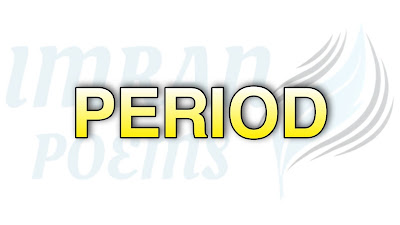PERIOD (.)
The period, called a full stop in British English, is one of the first punctuation marks we learn about when we begin reading and writing. Compared to commas or semicolons, the rules for using periods are blessedly simple.
What Does a Period Do?
The most common use of the period is, of course, to end a declarative sentence. Interrogative sentences (questions) end with a question mark.
Example: I like dogs. My dog is named Charlie. Charlie is the coolest dog who has ever lived; that’s a fact and not just my opinion.
Periods and Quotation Marks
When writers get confused about periods, it’s usually because they aren’t sure where to put them in relation to other nearby punctuation. In American English, the period goes inside the closing quotation mark at the end of a sentence.
Example: My mother loved to remind me of the old saying “waste not, want not.” Phillip said, “I can’t remember where I heard about the banjo concert, but I sure want to go.”
Periods and Parentheses
When a complete, independent sentence is entirely enclosed by parentheses, the period goes inside the closing parenthesis.
Example: Charlie scarfed up every Cheeto that fell out of the bag. (I wasn’t fast enough to stop him.) At least we won’t have to sweep the floor.
But, if the parenthetical material is nested inside another sentence, the period should go on the outside.
Example: Charlie barked wildly when he caught the scent of fresh bacon (his favorite).
Ellipses
An ellipsis (plural: ellipses) looks like three periods in a row with spaces in between them. There are two main uses for ellipses. One is to show that part of a quote has been omitted.
Example: Hamlet asked whether it was “nobler . . . to suffer the slings and arrows of outrageous fortune or to take arms against a sea of troubles.”
In the sentence above, the words “in the mind” have been omitted from the quote. Occasionally, you might need to leave out part of a quote because it’s irrelevant or makes the quote hard to understand in the context of the sentence. The ellipsis shows that you have left something out.
You can also use an ellipsis for literary effect, to represent a dramatic pause or a thought that trails off. Sometimes, this type of ellipsis is also referred to as “suspension points.”
Example: The bus was supposed to come at 3:00 so we waited and waited . . . and waited. Wait a minute . . . If you’re not watching Charlie, who is? I guess we could meet you there later. If there’s time . . .
This usage is fine in fiction, but you should avoid it in formal writing.


Post a Comment